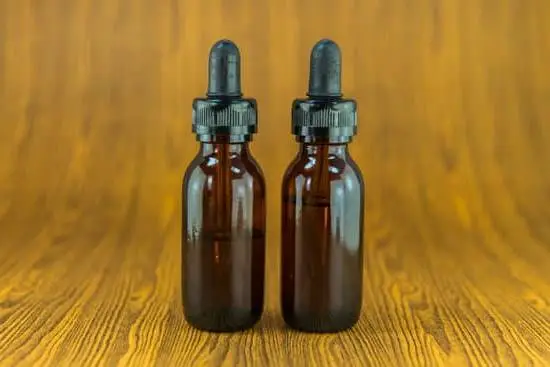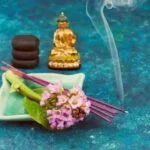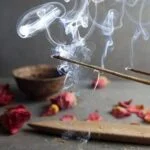Are you curious about how to use oils for aromatherapy? Aromatherapy has been used for centuries as a natural way to enhance emotional, physical, and mental well-being. This article will guide you through the basics of aromatherapy and essential oils, including the benefits, different methods of usage, safety tips, and even creating your own blends.
Aromatherapy is the practice of using natural plant extracts, such as essential oils, to promote health and well-being. Essential oils are highly concentrated plant extracts that retain the natural aroma and therapeutic properties of the plant they are derived from. The benefits of aromatherapy are vast and can be experienced through various methods such as inhalation, topical application, or using diffusers.
When it comes to using essential oils for aromatherapy, it’s important to choose the right ones for your specific needs. Understanding the different properties and benefits of essential oils can help you select the best ones for your desired outcomes. From relaxation and stress relief to improved focus and energy levels, there is an essential oil that can support your well-being in numerous ways.
Understanding the Benefits of Aromatherapy
Aromatherapy has been used for centuries as a natural and holistic way to promote physical, emotional, and mental well-being. Essential oils, which are the foundation of aromatherapy, have unique therapeutic properties that can provide a wide range of benefits. Here are some key benefits of incorporating aromatherapy into your daily routine:
1. Stress Relief: Certain essential oils such as lavender, chamomile, and bergamot have calming and soothing properties that can help reduce feelings of stress and anxiety. Diffusing these oils or adding them to a relaxing bath can create a peaceful atmosphere and promote relaxation.
2. Improved Sleep: Aromatherapy can be an effective tool for improving sleep quality. Studies have shown that inhaling certain essential oils like lavender or cedarwood can help promote better sleep by reducing insomnia and improving overall sleep patterns.
3. Enhanced Mood: Essential oils have the ability to positively impact mood and emotions. For example, citrus oils like lemon and orange are known for their uplifting effects, while peppermint oil can help increase alertness and focus.
4. Pain Relief: Some essential oils possess analgesic properties that can help alleviate headaches, muscle soreness, and other types of discomfort. Oils such as eucalyptus and peppermint can be diluted with a carrier oil then applied topically to the affected area for relief.
5. Respiratory Support: Aromatherapy with essential oils like eucalyptus or tea tree oil can aid in clearing airways and promoting better respiratory function when inhaled through steam inhalation or using a diffuser.
Understanding how to use oils for aromatherapy is crucial to fully reap these benefits. Whether you choose to diffuse essential oils around your home, apply them topically, or use them in other methods such as inhalation or even ingestion (with caution), it’s important to remember that essential oils are concentrated substances and should be used with care.
When exploring how to use oils for aromatherapy, keep in mind the following techniques:
– Diffusion: This method involves dispersing the aroma of essential oils into the air using a diffuser device.
– Inhalation: Inhaling essential oil vapors directly from the bottle or using steam inhalation methods.
– Topical Application: Diluting essential oils with a carrier oil before applying to the skin for absorption.
Incorporating aromatherapy into your daily routine does not have to be complicated; simple practices such as adding a few drops of your favorite essential oil to a bath, creating your own personal fragrance blend in roller bottles for on-the-go use, or even using an aromatherapy inhaler throughout the day can make aromatherapy accessible at any time.
By understanding the benefits of aromatherapy and learning how to use oils effectively, you can begin to experience firsthand the positive effects they may provide for your overall well-being.
Choosing the Right Essential Oils for Aromatherapy
When it comes to choosing the right essential oils for aromatherapy, it’s important to consider your specific needs and preferences. There are a wide variety of essential oils available, each with its own unique properties and benefits. Some popular options include lavender for relaxation, peppermint for mental clarity, and eucalyptus for respiratory support. It’s important to do some research on different oils and their effects before making a selection.
One way to choose the right essential oil for aromatherapy is to consider the scent that appeals to you the most. Aromatherapy works by stimulating the olfactory system, so finding a scent that you enjoy is crucial. If you’re looking for relaxation, consider floral scents like lavender or chamomile. For an energy boost, citrus scents like lemon or orange can be invigorating.
Additionally, understanding the therapeutic properties of different essential oils can help in choosing the right one for your needs. For example, if you suffer from headaches or migraines, choosing an essential oil with analgesic properties such as peppermint or rosemary can be beneficial. For those dealing with anxiety or stress, soothing oils like bergamot or ylang-ylang may be helpful.
It’s important to consult with a certified aromatherapist or healthcare professional if you have any specific health concerns before using essential oils for aromatherapy. Learning how to use oils for aromatherapy can enhance your overall well-being and promote a sense of balance and harmony in your daily life.
Different Methods of Using Oils for Aromatherapy (Diffusers, Inhalation, Topical Application, Etc)
Aromatherapy is the practice of using essential oils to promote physical and psychological well-being. There are various methods for using oils in aromatherapy, each with its own benefits and considerations. Understanding these different methods can help you maximize the effects of essential oils in your daily life.
One common method of using oils for aromatherapy is through diffusion. A diffuser disperses essential oil molecules into the air, allowing you to inhale them and experience their therapeutic effects. This method is great for creating a calming or energizing atmosphere in your home or workspace.
Inhalation is another popular way to use essential oils for aromatherapy. You can simply inhale the scent of an oil from the bottle, or add a few drops to a bowl of hot water and breathe in the steam. This method allows the aromatic compounds in the oils to directly affect your brain and nervous system, providing immediate relief from stress, anxiety, or fatigue.
Topical application involves applying diluted essential oils directly to the skin. When used properly, this method can have numerous benefits for skin health and general well-being. However, it’s important to be aware of safety guidelines and always dilute essential oils with a carrier oil before applying them to your skin.
It’s important to remember that not all methods of using essential oils for aromatherapy are suitable for everyone. Some people may have sensitivities or allergies that make certain methods less effective or even harmful. It’s always best to start with small amounts and observe how your body reacts before incorporating any new method into your daily routine.
| Method | Description |
|---|---|
| Diffusion | Disperses essential oil molecules into the air for inhalation |
| Inhalation | Breathing in the scent of an oil or inhaling steam containing essential oil compounds |
| Topical Application | Diluting and applying essential oils directly to the skin |
Safety Tips for Using Essential Oils in Aromatherapy
When using essential oils for aromatherapy, it’s important to keep safety in mind to prevent any adverse reactions or harm. One of the most crucial safety tips is to always dilute essential oils before applying them to the skin. Since essential oils are highly concentrated, they can cause irritation or sensitization if used undiluted. The recommended dilution ratio is typically 1-3% for adults and even lower for children or those with sensitive skin.
Another safety precaution when using essential oils for aromatherapy is to perform a patch test before widespread use. Apply a small amount of diluted oil to a small area of your skin and wait 24 hours to check for any redness, itching, or other adverse reactions. This will help you determine if you have any sensitivities to specific oils and avoid potential irritation.
It’s also important to be cautious when using essential oils around pets, as some oils can be toxic to animals. Always research and ensure the safety of an oil before diffusing it in your home if you have pets.
Additionally, never ingest essential oils without the guidance of a healthcare professional, as they can be harmful if consumed in large quantities. Following these safety tips will help you enjoy the benefits of aromatherapy while minimizing any potential risks associated with using essential oils.
Creating Your Own Aromatherapy Blends
Aromatherapy has gained popularity in recent years as a natural way to promote relaxation, improve mood, and enhance overall well-being. One of the key elements of aromatherapy is the use of essential oils, which are highly concentrated plant extracts that can be used in a variety of ways to harness their therapeutic properties.
Creating your own aromatherapy blends is a great way to customize your experience and target specific concerns or needs. In this section, we will discuss how to create your own aromatherapy blends at home.
Understanding Essential Oil Properties
Before you start creating your own aromatherapy blends, it’s important to familiarize yourself with the different properties of essential oils. Each essential oil has its own unique scent and therapeutic benefits, so understanding these properties will help you make informed choices when blending oils.
For example, lavender oil is known for its calming and relaxing properties, while peppermint oil is invigorating and uplifting. By understanding these properties, you can create blends that serve specific purposes, such as promoting relaxation or boosting energy.
Blending Techniques
There are several techniques for blending essential oils to create customized aromatherapy blends. One common method is the “top note,” “middle note,” and “base note” technique, which involves combining oils with different evaporation rates to create a balanced scent profile. Another technique is “synergistic blending,” where oils with complementary properties are combined to enhance their overall benefits. Additionally, experimenting with different ratios of oils allows you to fine-tune your blends to achieve the desired effects.
Creating Your Signature Blend
Once you have a good understanding of essential oil properties and blending techniques, you can start creating your own signature aromatherapy blends. Consider what therapeutic benefits you’re looking for – whether it’s stress relief, improved focus, or better sleep – and select oils that align with those goals.
Keep notes on the combinations you try and how they make you feel so that you can refine your blends over time for optimal results. With some experimentation and creativity, you can develop personalized blends that cater specifically to your needs.
By learning how to use oils for aromatherapy effectively and responsibly, individuals can take advantage of the numerous health benefits associated with this ancient practice while adding beautiful fragrances to their homes in a safe manner.
Incorporating Aromatherapy Into Your Daily Routine
Introduction to Incorporating Aromatherapy Into Daily Life
Many people are turning to aromatherapy as a natural way to promote relaxation, improve mood, and support overall well-being. With its growing popularity, it’s easier than ever to incorporate aromatherapy into your daily routine. Whether you’re looking to de-stress after a long day or simply uplift your spirits, using essential oils for aromatherapy can be a simple and effective method for enhancing your everyday life.
Creating a Relaxing Environment
One of the simplest ways to incorporate aromatherapy into your daily routine is by creating a relaxing environment at home. Using a diffuser is an easy way to disperse the aroma of essential oils throughout your living space. Whether it’s lavender for calming effects in the evening, or citrus oils for an uplifting boost in the morning, diffusing oils can help set the tone for your day.
Personal Care With Essential Oils
Another way to incorporate aromatherapy into your daily routine is through personal care products. You can add a few drops of your favorite essential oil to unscented lotion or carrier oil for a custom body moisturizer, or create your own scented bath salts for a spa-like experience at home. Additionally, using essential oils in homemade skincare products such as facial toners and serums can provide both aromatic and skin-nourishing benefits.
By incorporating these simple strategies into your daily routine, you can easily reap the benefits of aromatherapy and enjoy more balanced well-being throughout the day while also promoting better sleep at night.
Resources for Further Learning and Exploration of Aromatherapy and Essential Oils
In conclusion, essential oils can be a powerful tool for enhancing both physical and emotional well-being through the practice of aromatherapy. By understanding the benefits of aromatherapy and choosing the right essential oils, you can experience a wide range of therapeutic effects. Whether you prefer using diffusers, inhalation, or topical application, there are multiple methods to incorporate oils into your daily routine. However, it’s important to follow safety tips when using essential oils to avoid any negative reactions.
Creating your own aromatherapy blends can be a fun and creative way to customize your experience, allowing you to tailor your blends to your specific needs and preferences. The key is to experiment with different combinations and ratios until you find what works best for you. Incorporating aromatherapy into your daily routine can help you maintain a sense of calm and balance amidst the stresses of everyday life.
For those who want to delve deeper into the world of aromatherapy and essential oils, there are numerous resources available for further learning and exploration. Whether it’s books, courses, or workshops, these resources can provide valuable knowledge on how to use oils for aromatherapy effectively. Remember that everyone’s response to aromatherapy can vary, so it’s important to find what works best for you through experimentation and self-discovery.
Frequently Asked Questions
How Do You Use Aromatherapy Body Oils?
Aromatherapy body oils can be used by applying them directly to the skin, typically after a shower or bath. Simply massage the oil into your skin to enjoy its aromatherapy benefits throughout the day.
How Do You Add Essential Oils to Aromatherapy?
Essential oils can be added to aromatherapy diffusers, diluted in carrier oils for topical application, or mixed into unscented products like lotions or bath salts. It’s important to follow specific guidelines for each method of use.
What Are the Three Ways to Use Essential Oils?
The three main ways to use essential oils are through inhalation, topical application, and ingestion (although ingestion should only be done under the guidance of a professional). Each method offers different benefits, so it’s important to choose the right approach for your needs.

Are you looking for a natural way to improve your health and wellbeing?
If so, aromatherapy may be the answer for you.






